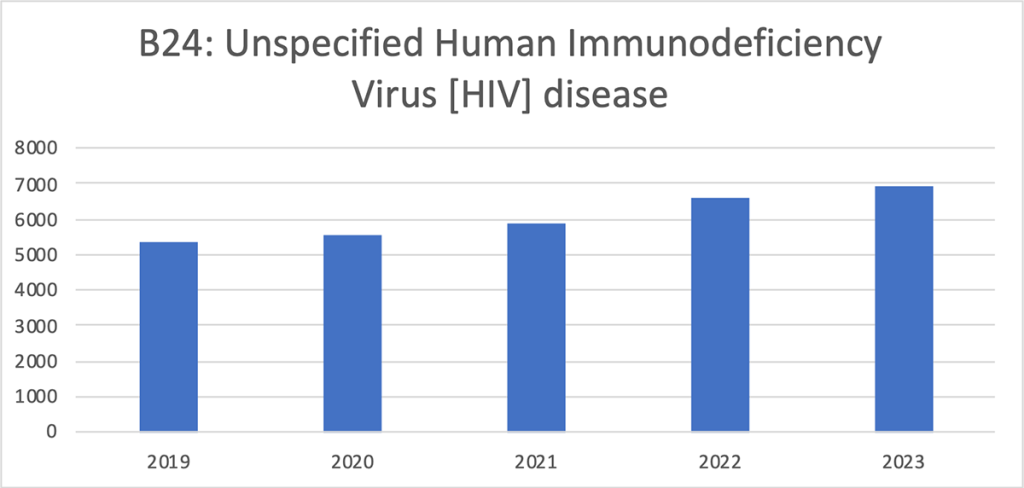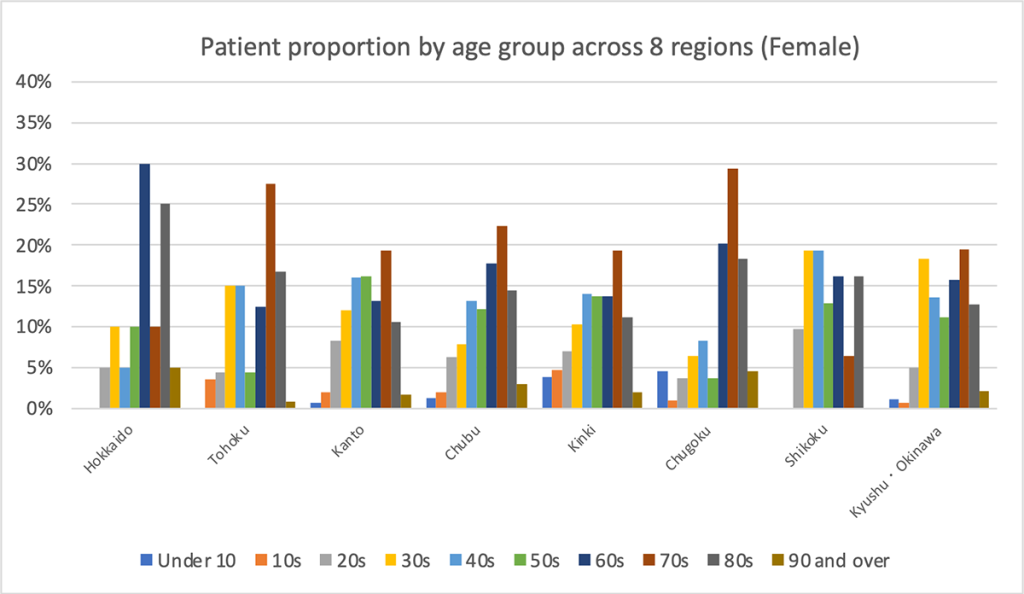
Trends in HIV Infections and Prescriptions for Anti-HIV Drugs from 2019 to 2023
The Ministry of Health, Labour and Welfare announced that the confirmed number of new HIV-infected individuals and AIDS patients reported in Japan in 2023 was 960, an increase of 76 compared to the previous year. Additionally, on August 28, 2024, the Ministry approved the HIV treatment drug “Truvada” for preventive use to prevent infection.
In response, we examined MDV data to observe the yearly trends in the number of patients diagnosed with B24: Unspecified Human Immunodeficiency Virus [HIV] disease from 2019 to 2023. We also looked at the yearly trends in the number of patients prescribed leading anti-HIV drugs in 2023, as well as the breakdown of patients by gender, across eight regions and different age groups.
First, using MDV data from January 2019 to December 2023, we examined the trends in the number of patients with B24: Unspecified Human Immunodeficiency Virus [HIV]

Data period:2019 to December 2023
Only hospitals with complete data for the specific month
Number of facilities that meet basic requirements: 368
Similar to the announcement by the Ministry of Health, Labour and Welfare, MDV data also indicated an upward trend.
Next, using MDV data, we examined the top anti-HIV drugs in 2023 and analyzed the yearly trends in the number of patients prescribed the top 10 products.

Data period:2019 to December 2023
Only hospitals with complete data for the specific month
Number of facilities that meet basic requirements: 368
Target drugs: ATC code J05C (Anti-HIV drugs)
The four drugs, Biktarvy, Dovato, Symtuza, and Pifeltro, showed an upward trend. In particular, Biktarvy has seen a marked increase since 2020, and by 2023, it had the highest number of prescribed patients compared to the other drugs.
Lastly, we examined the proportion of HIV patients by gender, across eight regions and age groups, using MDV data.

Data period:2019 to December 2023
Only hospitals with complete data for the specific month
Number of facilities that meet basic requirements: 368
The number of male patients starts to increase in their late 20s, peaking in their 40s, with particularly high patient proportions in Hokkaido and Shikoku. Overall, after peaking in their 40s, the proportion of patients declines from their 50s onward.

Data period:2019 to December 2023
Only hospitals with complete data for the specific month
Number of facilities that meet basic requirements: 368
The regional differences were not significant, with the majority of cases concentrated between the ages of 50 and 70. The number of patients starts to increase in their 30s and remains high between their 50s and 70s. In most regions, except for Hokkaido, which has a higher proportion of patients in their 60s, and Shikoku, with a higher proportion in their 30s and 40s, the patient proportion was highest in their 70s.
When comparing by gender, it was found that the proportion of male patients is higher in younger age groups (30s to 50s), while the proportion of female patients is higher in older age groups (60s to 80s).
Note: This article was published on October 1, 2024.
Data survey and analysis tailored to your specific requests
Databases, data analysis requests, and more.
© Medical Data Vision Co., Ltd. All Rights Reserved.





